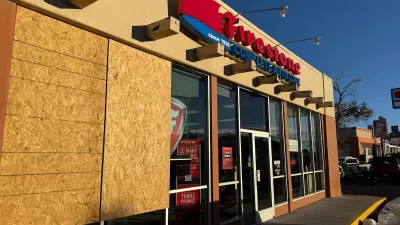Wrecking crews continue to clear the old hutongs of Beijing, replacing them with modern streets and skyscrapers. Meanwhile, a handful of scavengers work to save pieces of history from the wreckage.
"It is difficult to overstate how much of China's old imperial capital has disappeared in recent years. When the Communists took power in 1949, they inherited a city marbled with 7,000 alleyways, or hutong, a Mongol word that referred to the space between tents. In Old Beijing, hutong were the capillaries that fed the walled compounds where most people lived.
Even if the Communists forced aristocratic families to share their courtyard homes with scores of working-class families, the structures, and their stone-and-wood artistry, remained largely intact. Monument-building and road-widening claimed swaths of the old city in the 1950s and '60s, and more damage was done during the Cultural Revolution, but the pace surged in the 1990s, when China's embrace of market economics fueled a redevelopment juggernaut.
In the years leading up to the Beijing Olympics in August, the destruction took on a manic pace. According to Unesco, more than 88 percent of the city's old residential quarters are gone, including many government-designated heritage zones whose protections existed only on paper. Today, just 1,300 hutong remain, and many more neighborhoods, like the colorful Qianmen district just south of Tiananmen Square, are scheduled for renewal."
FULL STORY: Finding Treasures in a City’s Disappearing Past

Trump Administration Could Effectively End Housing Voucher Program
Federal officials are eyeing major cuts to the Section 8 program that helps millions of low-income households pay rent.

Planetizen Federal Action Tracker
A weekly monitor of how Trump’s orders and actions are impacting planners and planning in America.

Ken Jennings Launches Transit Web Series
The Jeopardy champ wants you to ride public transit.

Rebuilding Smarter: How LA County Is Guiding Fire-Ravaged Communities Toward Resilience
Los Angeles County is leading a coordinated effort to help fire-impacted communities rebuild with resilience by providing recovery resources, promoting fire-wise design, and aligning reconstruction with broader sustainability and climate goals.

When Borders Blur: Regional Collaboration in Action
As regional challenges outgrow city boundaries, “When Borders Blur” explores how cross-jurisdictional collaboration can drive smarter, more resilient urban planning, sharing real-world lessons from thriving partnerships across North America.

Philadelphia Is Expanding its Network of Roundabouts
Roundabouts are widely shown to decrease traffic speed, reduce congestion, and improve efficiency.
Urban Design for Planners 1: Software Tools
This six-course series explores essential urban design concepts using open source software and equips planners with the tools they need to participate fully in the urban design process.
Planning for Universal Design
Learn the tools for implementing Universal Design in planning regulations.
Ada County Highway District
Clanton & Associates, Inc.
Jessamine County Fiscal Court
Institute for Housing and Urban Development Studies (IHS)
City of Grandview
Harvard GSD Executive Education
Toledo-Lucas County Plan Commissions
Salt Lake City
NYU Wagner Graduate School of Public Service



























